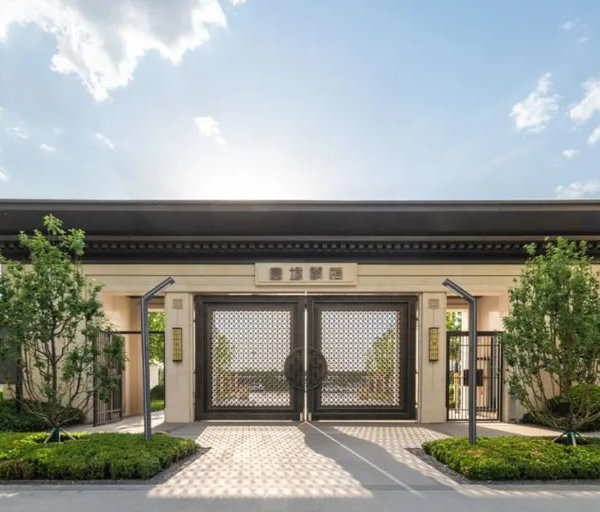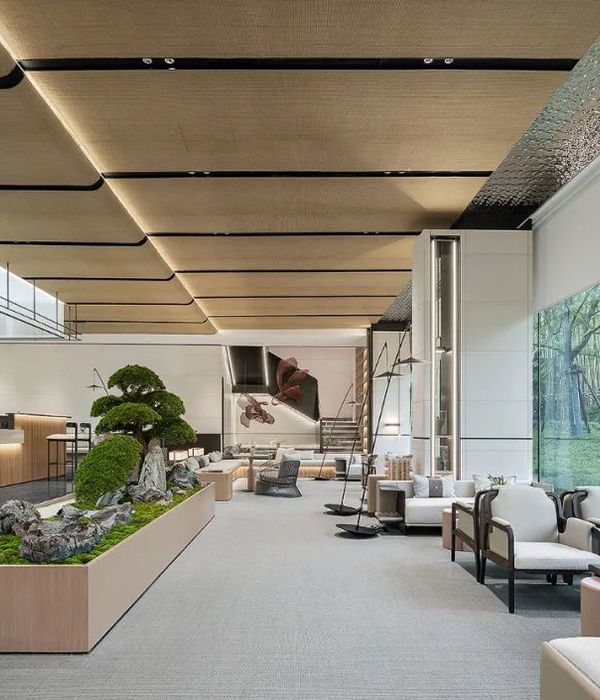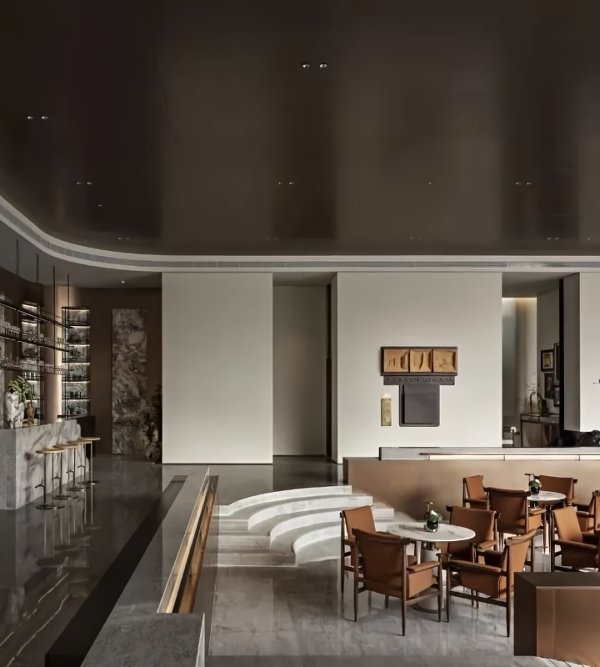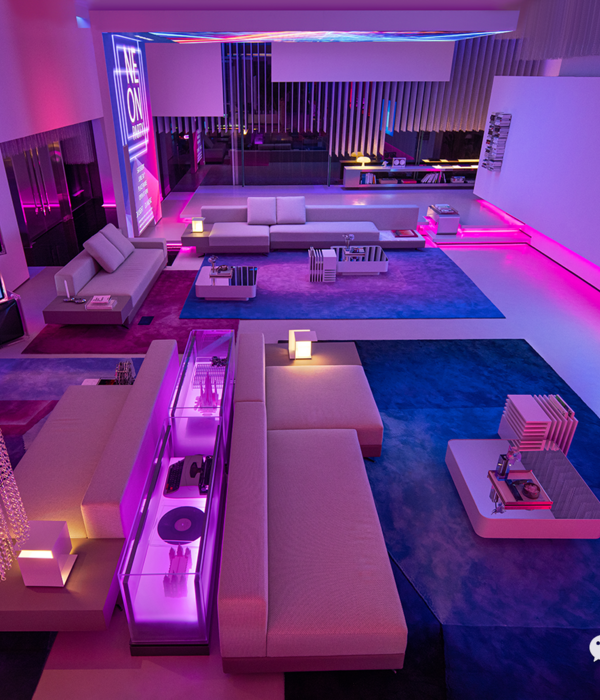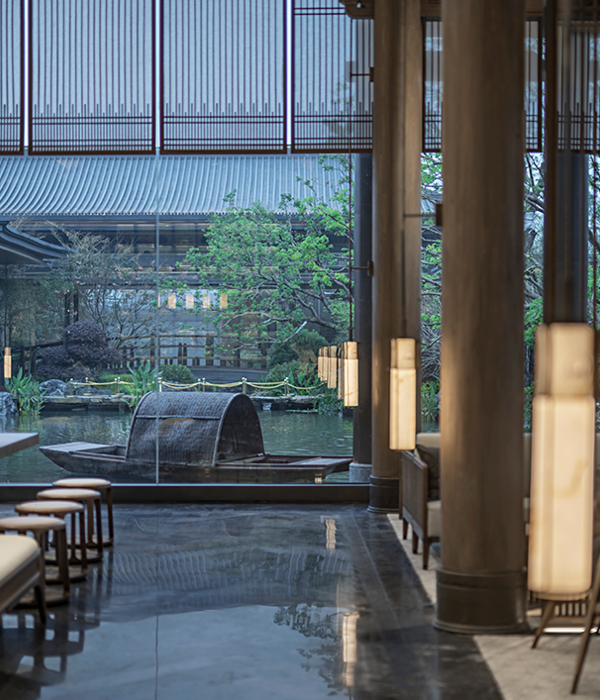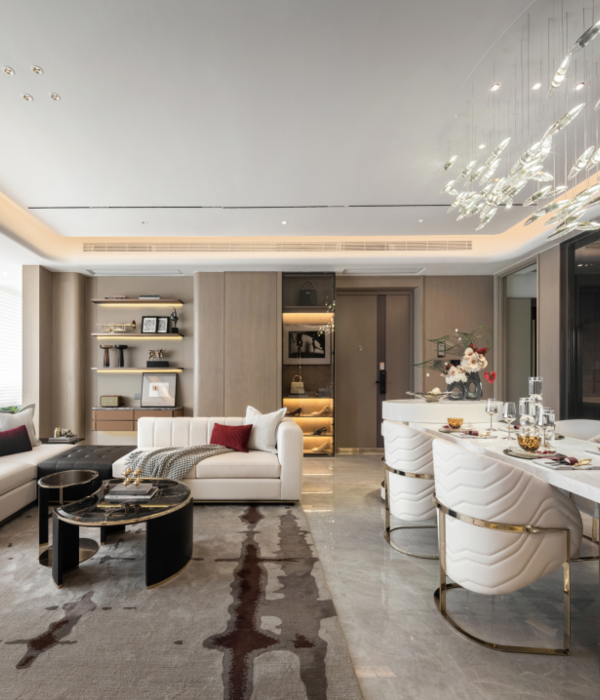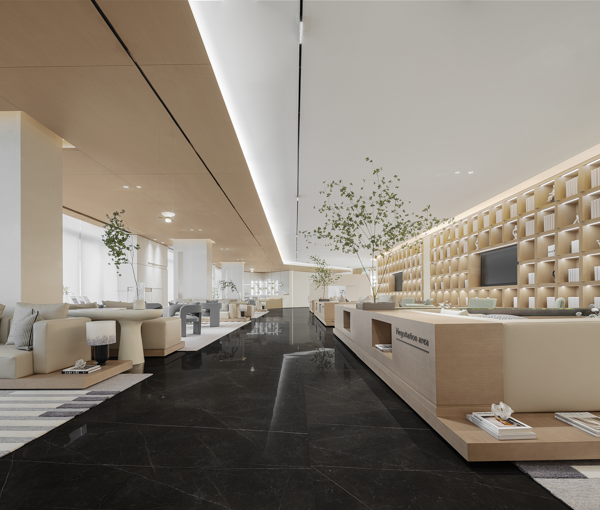架构师提供的文本描述。共同点是在市中心进行的恢复未使用土地的试验的结果。采用预制件法,如在工厂生产模块,运输到施工现场并现场组装,可将5300平方米建筑的施工时间缩短到5个月。
Text description provided by the architects. Common Ground is the result of an experiment of revitalising unused land in the middle of the city. By applying prefab methods, e.g. producing modules in a factory, transporting them to the construction site and assembling them on-site, it was possible to reduce the construction time of the 5300 m2 building to five months.
为了最大限度地提高长方形土地的使用效率,建筑形式是以连接两座建筑的中心广场为基础的。
In order to maximise the usage efficiency of the elongated rectangular shaped land, the architectural form is based on a center square connecting two buildings.
在交通繁忙的主干道一侧,集装箱模块堆放在一起,以增加建筑物外部的冲击力,并吸引路人的注意。对岸的质量一直保持开放,自然连接周围环境的游客流量,并更容易邀请人们进来。
At the traffic-heavy main street side, container modules were stacked to give the building exterior more impact and draw attention from passers-by. The mass on the opposite side has been kept open to naturally connect to the visitor flow of the surrounding environment and invite people in more easily.
街道市场和市政厅这两座建筑都是以集装箱建筑为基础的,但在设计上却有着不同的特点。
The two buildings, STREET MARKET and MARKET HALL, are both based on container architecture but are designed with different characteristics in mind.
街道市场的集装箱布置在一个突出的配置,突出个别模块,并给予外部更多的影响。市政厅由12米长的集装箱模块组成,用作隔开的购物亭。与大厅屋顶相同大小的模块在三楼创造了一个可用的露台区域。
The containers of the Street Market are arranged in a protruding configuration, highlight the individual modules and give the exterior more impact. The Market Hall is made of 12m long-span container modules which are used as separated shopping booths. Same- sized modules as roof of the hall create a usable terrace area on the third floor.
Architects URBANTAINER
Location 17-1 Jayang-dong, Gwangjin-gu, Seoul, South Korea
Category Market
Area 5300.0 m2
Project Year 2016
{{item.text_origin}}

